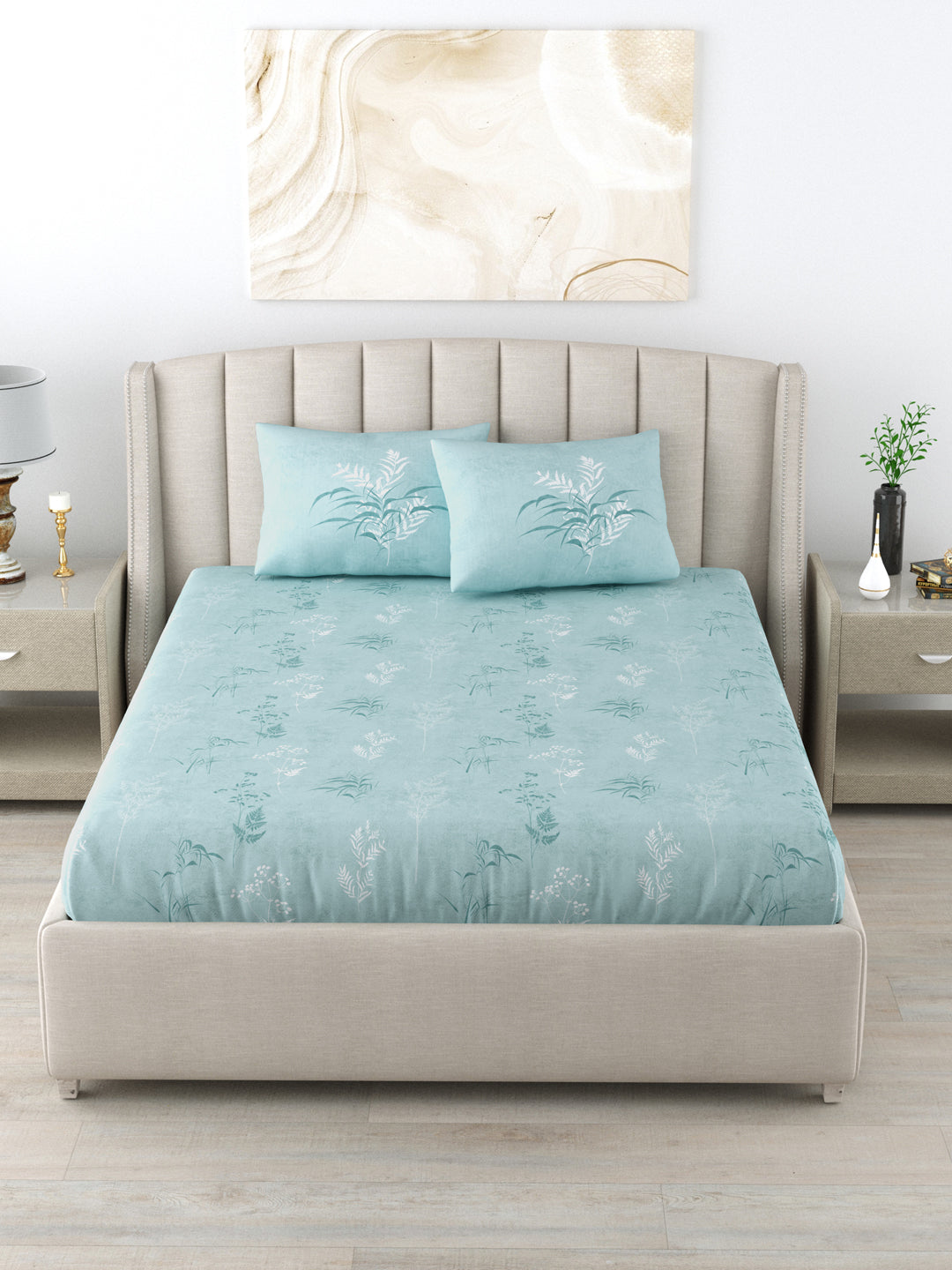Different Types of Bedsheets

There are various types of bed sheets available in the market, each with its own unique features, materials, and benefits. Here are some common types of bed sheets based on material and weave:
- Cotton Sheets:
- Percale: Crisp and cool, percale sheets are made from closely woven cotton. They are breathable and have a smooth, matte finish.
- Sateen: Sateen sheets have a silky feel and a lustrous sheen. They are made from cotton woven in a way that gives them a slightly shiny appearance.
- Linen Sheets:
- Linen bed sheets are made from the fibres of the flax plant. They are breathable, absorbent, and have a natural texture that softens over time.
- Jersey Sheets:
- Made from a stretchy knit fabric similar to that used in T-shirts, jersey sheets are soft, comfortable, and have a casual, relaxed feel.
- Flannel Sheets:
- Ideal for colder weather, flannel sheets are made from loosely spun cotton, wool, or a blend. They are soft, warm, and have a fuzzy texture.
- Microfiber Sheets:
- Microfiber sheets are made from finely woven synthetic fibres. They are often soft, lightweight, and resistant to wrinkles and stains.
- Bamboo Sheets:
- Bamboo sheets are made from bamboo fibres. They are soft, breathable, and naturally hypoallergenic. They also have moisture-wicking properties.
- Tencel Sheets:
- Tencel sheets are made from the wood pulp of eucalyptus trees. They are known for being environmentally friendly, soft, and moisture-wicking.
- Silk Sheets:
- Silk sheets are luxurious and known for their smooth, cool feel. They are often chosen for their hypoallergenic properties and ability to regulate temperature.
- Supima Cotton Sheets:
- Supima cotton is a high-quality, long-staple cotton known for its durability and softness. Sheets made from Supima cotton are often of premium quality.
- Percale Blend Sheets:
- Some sheets are made from a blend of different materials, such as cotton and polyester. These blends can offer a combination of comfort and durability.
When choosing bed sheets, consider factors such as personal preference, the climate of your region, and any specific needs you may have, such as hypoallergenic or moisture-wicking properties. Additionally, it's essential to check care instructions for proper maintenance. Here's a breakdown of different types of bed sheets based on other features:
- Thread Count:
- Thread count refers to the number of threads per square inch. Higher thread count doesn't always mean better quality; it depends on the material. Generally, a thread count of 200 to 800 is considered good quality.
- Size:
- Twin: 39 x 75 inches.
- Full/Double: 54 x 75 inches.
- Queen: 60 x 80 inches.
- King: 76 x 80 inches.
- California King: 72 x 84 inches.
- Special Features:
- Deep Pocket: Fitted sheets with extra depth for thick mattresses.
- Elastic All Around: Ensures a snug fit on the mattress.
- Anti-wrinkle or Wrinkle-resistant: Requires less ironing.
- Hypoallergenic: Suitable for those with allergies.
- Organic: Made from organic materials without pesticides.
- Microfiber: Resists allergens and dust mites.
- Seasonal Sheets:
- Summer Sheets: Lightweight and breathable materials like percale or linen.
- Winter Sheets: Flannel or heavier cotton for warmth.
- Prints and Patterns:
- Solid: One color throughout.
- Printed: Various patterns and designs.
- Stripes, Dots, Florals, Geometrics: Different design options.
- Temperature Regulation:
- Linen: Breathable and suitable for hot temperatures.
- Flannel: Insulating and ideal for colder climates.
- Cooling Fabrics: Some sheets are designed to wick away heat and moisture.
- Organic and Eco-Friendly:
- Organic Cotton: Grown without synthetic pesticides.
- Bamboo: Grows rapidly and requires fewer resources.
Read more: Pros and Cons of Using Fitted Bedsheets: Finding the Perfect Fit for Your Bedding Needs
When choosing bed sheets, consider personal preferences, climate, and any specific needs you may have, such as allergies or temperature regulation. It's also essential to follow care instructions to maintain the longevity and quality of your sheets.
